The Tokyo Art Book Fair 2017
Published on: 06.12.2017
Art Book Fairs. Tokyo
Text and photographs: Marija Hristova
The question: what exactly is an art book, the instance you enter an art book fair, transforms into: what else can an art book be? The art book fairs, around the world, are the most relevant places for revealing the definition, form, the borders and the future directions of publications that stand at the passage between the conventional book model and the adopted media of artistic expression. Furthermore, those are places where the margins and the conditions of the field of the printed media, paper and the book in a broader sense, can be examined. Moreover, the innovative approach of the art book as a medium, essentially, touches the challenges that the printing and the publishing industries face in contemporary context.
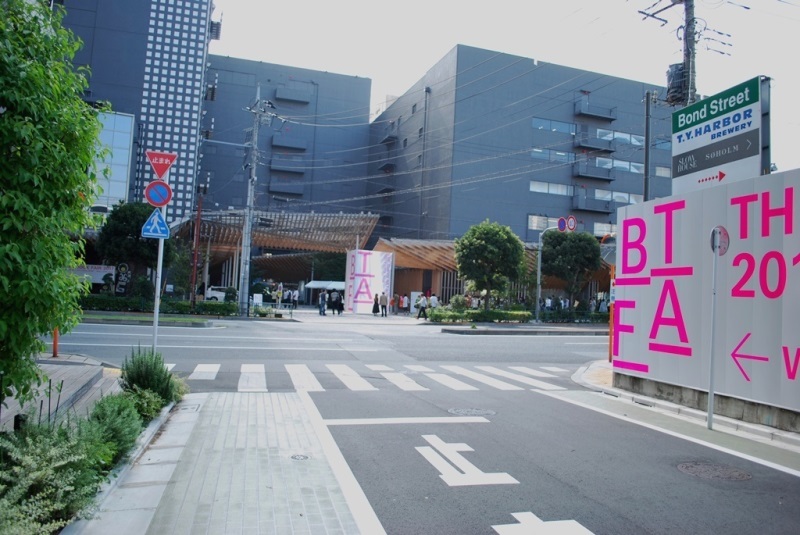
The entrance of the Tokyo Art Book Fair 2017, Terrada warehouse, Tokyo
A fair of this type is being held in Tokyo, for nine years in a row, which unpretentiously grew to become one of the biggest platforms for international presentation of art books in Asia and worldwide. At this fair, which year after year has grown bigger and more international, numerous publishers in the field of the art book take part, alongside galleries with their publishing work, independent artists, zine-makers, printers, distributors etc. Among the array of big international exhibitors, worldly recognized art book publishers, as well as independent artists of DIY publications, from 5 - 8 of October, Privaten print had the opportunity to present its publications and Macedonian artists.
The fair was held on 4 floors of the Terrada warehouse, at Tennozu Isle in the Tokyo Bay. The building Terrada itself is an art complex, which takes part in the idea of connecting the activities of the fair with the neighborhood of Tennozu Isle, a location consisted of gallery and museum spaces, and workshops. That is a quiet part of Tokyo, where the busyness of the central areas is not seen on ordinary days. It is filled with business buildings, and galleries, architectural workshops, museum of architectural models, art supplies shops sparse in between. The isle is famous for the Immigration Bureau that is located there, because of which, it becomes a symbol of the test of the immigrants’ will to stay in Japan.
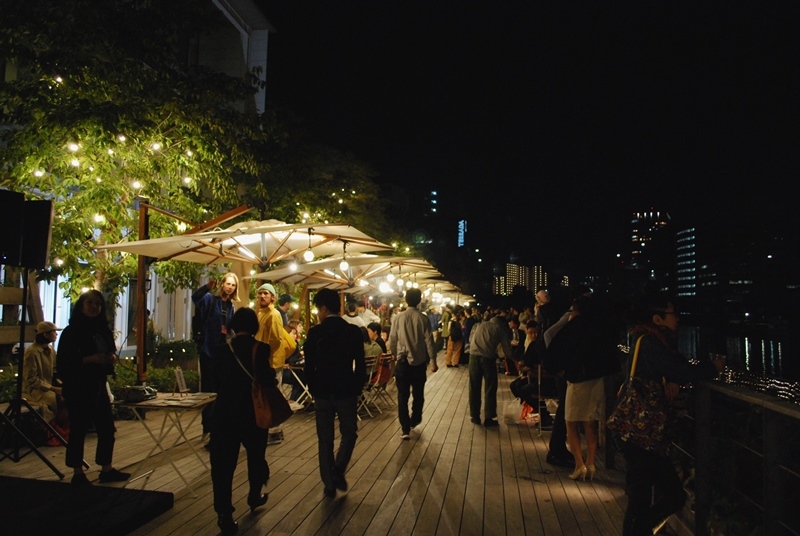
Food and drink stands, Tennozu Isle
The experience at the Tokyo Art Book Fair 2017, on its latest, extended edition, was complemented with the experience of our stay in Tokyo, both of which would not have been complete without one another. Even though these fairs resemble one another, as if the community of art book publishers is one transnational network that recognizes itself at any place in the world, still, and beyond the initial familiarity, some features specific to Tokyo and Japan can be traced. To begin with, the organization of the event and the functional solving of every step of the fair, starting from the preparations, and all through the activities within the framework of the fair, followed by with the way organizers would handle unpredictable situations such as crowds, and waiting rows in front of the elevators, as well as the working on the ongoing organizational details, - everything happened with invisible presence of the organizers and their unbelievable power to predict the problems before they could even arise.
The fair visitors are the other important part of the story. The way they approached the exhibited products, is something that can be seen as a general characteristic of the atmosphere and the attitude of Japanese people towards the world and people around them, and their everyday encounters. Tokyo people give away an atmosphere of calmness, a specific respect towards the world, sincere and humble curiosity. The encounter with that sincere curiosity and clear inner respect of the Japanese was mirrored in the whole experience within this wonderful world, no matter if it was a conversation about our books, walking around the city, the shops, streets, malls, or in the trains. The obstacle presented in the language barrier and their primary introversion, were easily surpassed with each day. Taking into account that these publications are mainly visual, the art book fairs very easily can evolve into international events which could become easily accessible to audience in different societies, with different linguistic and cultural backgrounds. The book becomes an object that can be comprehended no matter the language. The only thing that is left is to find its way to the audience.
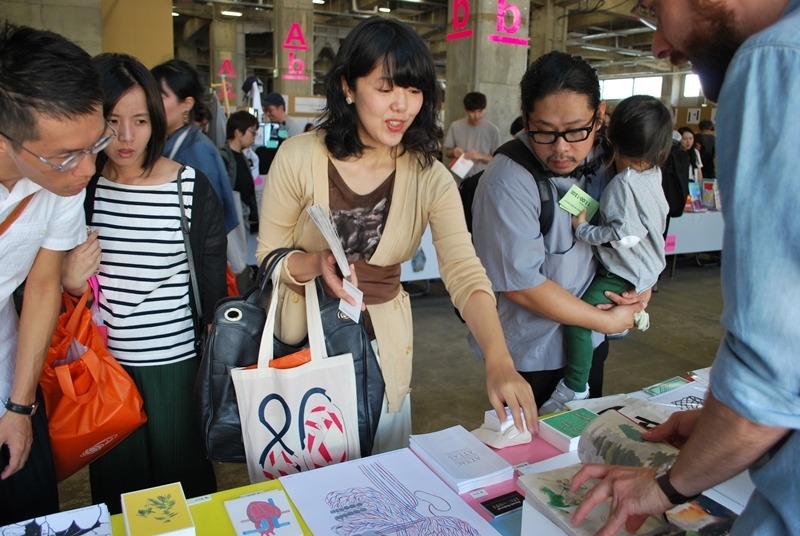
The visitors at the Private Print's stand
We are involved in the whole process of the creation of the publications, from the very origin of the idea, through its development, the work in the printing house, to the promotion and distribution. We are very personally involved in the life of the works, which gives us the opportunity to be immediate and personal in the approach in the presentation of the publications to the audience, at any point in the world. That is very similar to the approach of a number of the other publishers/artists that took part at the fair. So, the experience that the visitors and we as exhibitors had, was very similar: you can enter the story around the book, the concept and its development process very directly. It is unbelievable, when you see the same passion mirrored in the visitors that receive the publications like they are their own, but also in the other exhibitors when you can recognize the same approach, attitude and perception.

Visitors at the Tokyo Art Book Fair 2017
The art book fairs and the similar events are keeping alive the idea that people can understand each other and connect at different levels, but, more importantly, that those are the places where individuals’ passion toward the book and the printed media, as well as the personal involvement in the research of their borders, get unimaginable dimensions.
\\\
Art book and the Japanese context
Text: Ilija Prokopiev
The art book fair in Tokyo is the biggest fair in Asia for this type of publishing. Aside from the large and dominant number of Asian publishers, galleries and artists, a great number of international publishers and arts were presented at the art fair as well. This year (2017), Private print was among them, presenting its art books and printed materials. Our experience as a publishing house, at this fair, was of great importance because of the fact that we were able to show our publications and our artists before the Japanese audience, but also, and especially, because of the encounters with a great number of publishers and different approaches to the art book practice.
Japan has a great tradition in the field of art book publishing. Even though we might think that this artistic genre is experiencing a rising trend, in Japanese context it is more a way of maintaining the continuity of the tradition of artistic expression. Looking back in history, the origin of this genre takes us to the Edo period in Japan, from the 17th till the middle of the 19th century. In this period, around the names of the Japanese artists Santō Kyōden (1761-1816) and his book with images Shiji no yukikai, 1798 and Katsushika Hokusai (1760-1849) and the publication of his sketch books dedicated to learning about art, the word manga appears for the first time. The main meaning of the term contains the logic of the contemporary understanding of the art book, and that is a book full of unrelated images on different themes: floral, animal, pictures of the everyday life, mythological images, all created with the idea and aim for their final form to be a book. That is a form that was naturally born from within the context of that time, and it represents understanding of the art-work as a need, that is not separated from everyday life, in other words: art that is practiced as an everyday object. In that period, despite the political isolation of Japan, the culture was living its golden age. What follows is a period of expansion of the popular art, and with that, a development of the printmaking technics and the mastery of the woodcut printing. This enabled mass printing and distribution of the images. As a result, these books became instant bestsellers. Those were the most popular ways of art consumption. Books whose content transformed them in objects of artistic and collector’s importance. They contained beauty, pleasure and masterful art, in a form of an everyday object (a book), an object, also, that is not expensive.
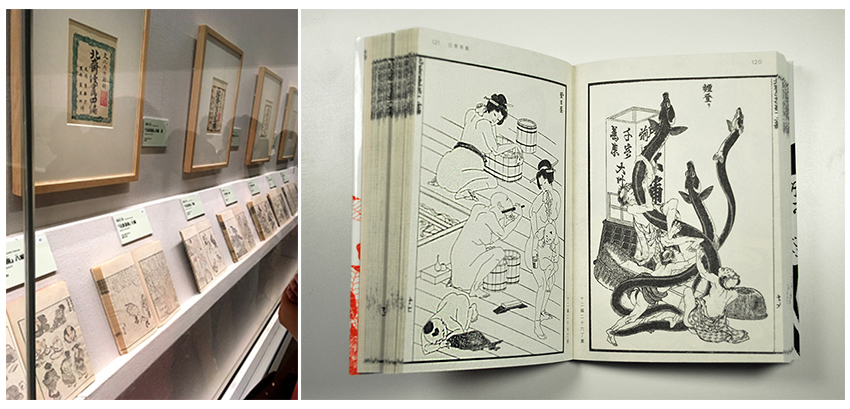
Left:Rare examples of Hokusai Manga, part of the collection of Sumida Hokusai Museum in Tokyo, Japan. Right:Contemporary reissue of Hokusai Manga " The Life and Manners of The Day", Seigensha art publishing, 2010. Photographs: Ilija Prokopiev
The Tokyo Art Book Fair is a clear example of this tradition. In its last edition, one of the exhibitions within the fair was dedicated to the designs of the books of the famous Japanese artists and graphic designer Tadanori Yokoo, 1936). The artistic expression of Tadanori Yokoo, as one of the most important graphic designers in the post-war period in Japan, is a synthesis of the western cultural influences of pop-art and Indian culture, mysticism and psychedelia, within the Japanese traditional artistic milieu. Often, defining himself as a commercial graphic designer, and simultaneously, trying to redefine the term commercial through his Japanese background, he positioned his profession as the main structural component of the idea of the commercial, a skill that he used to shape people’s perception of everyday life, approaching them through their needs and opportunities. His practice as a designer involves designs for film and theater posters, books and magazines.
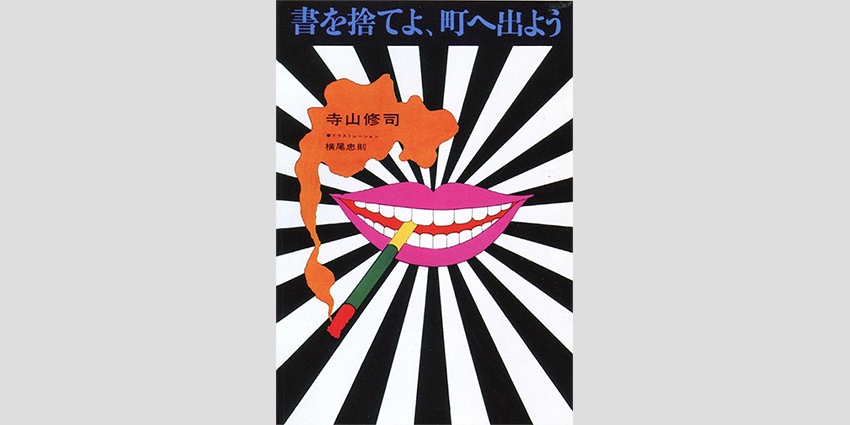
Cover design by Tadanori Yokoo for the book "Throw Away Your Books, Rally in The Street" by Shuji Terayama, 1967
In this direction, I would like to mention the Japanese publishing platform Rondade, whose production includes design of products in the field of the music industry, editing and publishing books, event planning, and web-site design. Primary focused at the alternative music scene, their engagement as a platform represents a wider understanding of the term publishing, as unspecific. For Rondade, to publish is to edit entirely, the publication and the design are one fragment of the realization of the idea. By putting the idea at the first place, it immediately becomes approachable and, with that, multifunctional.

Left:Photo publication Go Itami - Study by Rondade publishing exhibited in Motto art book store in Berlin. Right:Photo publication Plastic by Rondade publishing as an exhibit, downloaded from Rondade Facebook page
One whole section of this year’s edition was dedicated to the printing houses and the paper producers. This, for the Japanese, is a crucial segment of the completion of the products in the publishing and design processes. When they think of a book, they don’t think only of its contents, but also of its beauty as an object; of the beauty and the texture of the paper, the quality of the binding, the color durance. All these details contribute to the content of the book, or, sometimes, and especially in the context of the art book, are part of its contents.
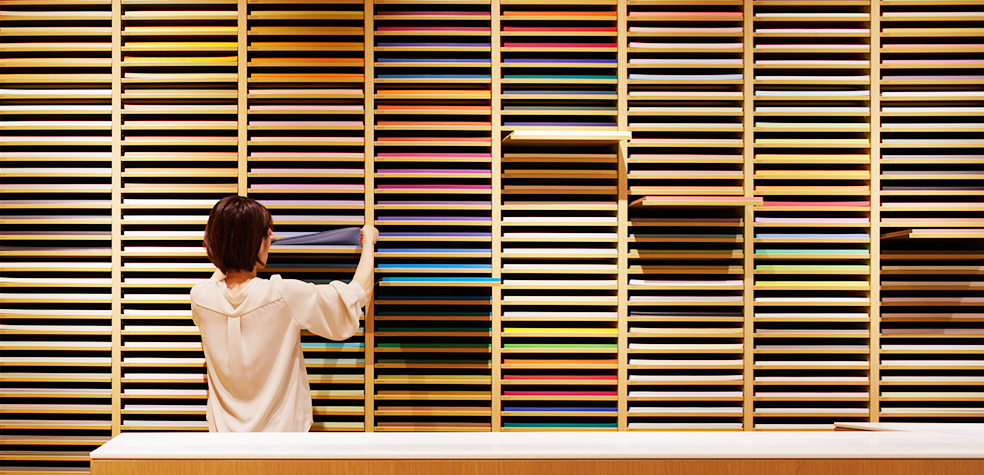
One of the show rooms of Takeo paper shop in Tokyo, Japan
All in all, the Tokyo Art Book Fair is an event through which the art, the technology and the book all together, generate new ideas and tendencies. The Japanese treatment of the book and the design practice, are indicators of an exceptional position of the society towards values and knowledge.